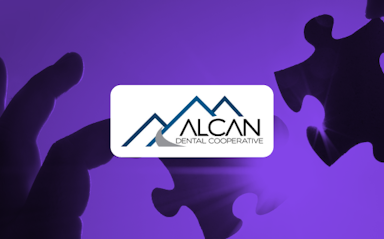Digital Imaging in Dentistry: The Future of Precision and Patient Care
Since its inception in the 1980s, dental imaging has been synonymous with traditional X-ray radiography. Fast forward to today's whirlwind of changes in the dental world, and you'll find that digital imaging has completely turned the tables on how dental offices get things done.
With dental digital imaging taking the spotlight, dental practices and DSOs bring numerous perks - think smoother patient experiences and diagnostic accuracy.
Do you know that in 2022, the dental digital imaging market was already worth $4 billion? And by 2027, this figure is expected to rise to a whopping $7 billion.
More and more dental practices are choosing digital imaging over conventional X-ray methods.

Digital imaging in dentistry encompasses a spectrum of modalities. Let’s take a look at some of them.
Different Types of Dental Digital Imaging
3D Dental Imaging

What is 3D dental imaging?
3D dental imaging is a technique that helps dentists obtain a 3-dimensional image of a patient's oral and maxillofacial structures. It helps in diagnosing and planning various dental and oral treatments.
Why 3D dental imaging is the next big thing in dentistry?
The global 3D imaging market size was USD 30.28 billion in 2022 and is estimated to reach USD 166.01 billion by 2032, expanding at a CAGR of 18.6% from 2023 to 2032

Statistics clearly show how dental practices are trying to catch up with digital trends. And it is interesting to learn that these numbers are very practical at today’s adoption rates.
Applications & Advantages of 3D Dental Imaging
3D imaging in dentistry spans a broad spectrum, with notable impacts on implant placement, orthodontics, and endodontics.
The inherent precision of 3D dental imaging offers:
- Improved accuracy in treatment planning and execution
- Enhanced patient outcomes in dental procedures
- Means to build trust and commitment in patients
- Optimization of the position of dental implants
- Ease of conducting intricate orthodontic adjustments
We have provided a detailed analysis of the pros and cons of dental digital imaging at the end of this blog. Do take a look.
3D Dental Imaging Product Suppliers
Intraoral Imaging(Cloud-based)

The quick transition from traditional film-based radiography to digital imaging has reshaped the diagnostic process in dental practices. This shift is evident in intraoral imaging, where various types of intraoral cameras and images help dentists assess oral health conditions.
Recently, an increasing number of dental practices and DSOs are transitioning to cloud-based digital imaging systems from conventional imaging methods.
How Moving to Cloud-based Intraoral Imaging Will Benefit Your Practice
For many years, dental practices favored on-premise intraoral imaging software due to prevalent connectivity challenges associated with cloud-based solutions. Cloud-centric digital imaging software is progressively replacing on-premise methods for intraoral imaging. Let’s look at how moving to cloud-based intraoral imaging benefits dental practices and DSOs:
- Accessibility
- Collaboration
- Scalability
- Data Security
- Sustainability
Some of the existing Intraoral software providers(cloud-based)
We have provided a detailed analysis of the pros and cons of dental digital imaging at the end of this blog. Do take a look.
Extraoral Imaging(Cloud-based)

Digital imaging extends beyond intraoral applications, encompassing extraoral imaging techniques that play a pivotal role in today’s diagnosis and treatment planning for dentists.
Extraoral images will assist dentists in detecting anomalies, such as impacted teeth and jaw irregularities that might not be evident in intraoral images alone.
Applications of Extraoral Imaging
- Orthodontics
- Dental Implants
- Oral & Maxillofacial Surgery
- Trauma Evaluation
- Prosthodontics
Types of Extraoral Imaging
- Panoramic Radiography
- Cephalometric Radiography
- Cone Beam Computed Tomography (CBCT)
Digital dental imaging is getting a whole new perspective with the ascent of cloud-based dental imaging software. This innovation has transformed how patient images are captured, stored, and managed.
Rise of Cloud-Based Dental Imaging Software in Modern Dental Practices & DSO
Dental digital imaging software plays a critical role in dental practices, offering a range of benefits that enhance diagnostic accuracy, treatment planning, and overall patient experience.
Amidst numerous software trends, let’s understand how dental imaging software will benefit dental practices or DSOs.
Dental Imaging Software Capabilities:
Diagnostics Precision: Dental imaging software allows practitioners to capture high-resolution images of a patient's oral structures, including teeth, bones, and soft tissues. This level of detail is crucial for accurate diagnoses of various dental issues such as cavities, periodontal diseases, and abnormalities.
Treatment Planning: Precise imaging aids in comprehensive treatment planning. With 3D visualization tools, practitioners can assess the extent of dental problems and create tailored treatment plans.
Patient Engagement: Visualizing dental issues through imaging software helps patients understand their conditions better. Dental professionals can walk patients through their images, making comprehending the necessity of specific treatments easier.
Efficiency and Workflow: Dental imaging software streamlines workflows by enabling seamless sharing of images and reports among practitioners within the practice. This facilitates collaboration and allows for multidisciplinary approaches to complex cases, ultimately saving time and improving patient care.
Long-Term Monitoring: Dental imaging software isn't just about immediate diagnostics; it's also invaluable for monitoring the progress of treatments over time. Practitioners can track changes in a patient's oral health and make necessary adjustments to treatment plans accordingly.
Choosing Between Cloud & On-premise Dental Imaging Software
Selecting the suitable deployment model for dental imaging software is a decision that practices must make based on their unique needs and preferences.
If you are a multi-location practice, opting for a cloud-based imaging software will yield multiple benefits, including:
- Data centralization
- Real-time collaboration
- Remote access
- Consistency in care
- Reduced IT burden
Both cloud-based and on-premise solutions have their own advantages. Let’s look at a comparison.
| Functionality | Cloud-Based | On-Premise |
|---|---|---|
| Can be accessed from anywhere, anytime | Yes | No |
| Scalable to accommodate growing needs | Yes | No |
| Recent feature updates without manual efforts | Yes | No |
| Multi-layered Security with encryption | Yes | No |
| Automated Data Backup to prevent data loss | Yes | No |
In the end, the choice between cloud-based and on-premise dental imaging software depends on factors such as practice size, budget, regulatory requirements, and desired levels of accessibility and control.
The Pros & Cons of Dental Digital Imaging
In dental practices, adopting digital dental imaging doesn't just signify a technological upgrade; it translates to a myriad of benefits that redefine efficiency, patient education, and data management. As the two sides of a coin, the concept has some cons.
Let's discuss the pros and cons dental digital imaging brings to the forefront of modern dentistry.
| Pros | Cons |
|---|---|
| Enhanced Visualization: Digital images provide high-resolution visuals of teeth, gums, and oral structures. | Inaccurate Images: Poor positioning of the equipment malfunctions can lead to unclear images that might affect diagnostic accuracy. |
| Quick Results: You can view images instantly after capture, enabling real-time diagnosis and treatment planning. | Learning Curve: Dentists and staff must be trained to use digital imaging equipment and associated software effectively. |
| Patient Education: Digital images can be easily shared with patients on screens to explain conditions, treatment options, and expected outcomes. | Dependency on Technology: If technical issues arise, obtaining and analyzing digital images might be delayed. |
| Reduced Radiation Exposure: Requires lower radiation doses compared to traditional X-ray films, contributing to patient safety. | Initial Costs: The upfront investment in digital imaging equipment, such as digital X-ray sensors and intraoral cameras, can be significant for dental practices. |
| Image Enhancement: Digital images can be manipulated to adjust contrast, brightness, and zoom levels, aiding in more precise diagnosis. | Limited Field of View: Some digital imaging methods require multiple images to obtain an overall view of complex dental conditions. |
| Electronic Records Integration: Digital images can be seamlessly integrated into electronic health records (EHRs), providing patient's dental history. | |
| Storage and Accessibility: Digital images can be stored electronically, saving physical space and enabling easy access | |
| Reduction of Chemical Waste: Digital imaging eliminates the need for chemicals used in film development, making it more environmentally friendly. |
Things To Look Out For While Choosing a Cloud-Based Dental Imaging Software
Digital imaging in dentistry holds immense promise. As practices embrace these innovative technologies, it's crucial to address the complexities that come hand in hand.
Let’s look into some of the significant checklists or considerations dental practices and DSOs should consider when choosing a cloud-based dental imaging software.
1. Integration Capabilities
A dental imaging software should seamlessly integrate with other systems in your practice, such as practice management software and electronic health records(EHR). Dental practices and DSOs increasingly opt for all-in-one dental software like CareStack, which offers dental digital imaging, dental charting, online dental scheduling, patient portal, revenue cycle management, and more.
2. Prioritize Data Security & Privacy with HIPAA-Compliant Software
Ensure that the software follows industry standards and regulations, such as HIPAA and ISO. The software should also have robust encryption and security measures to protect patient data.
3. Accessibility
The dental imaging software should allow users to access it from any device or location, facilitating teledentistry and collaboration.
4. Prompt Customer Support
24/7 customer support, training sessions, and regular updates are crucial for any software to function efficiently. Websites like Capterra, Softwareadvise, and G2Crowd provide a list of top-rated dental software that offers excellent customer support reviewed by verified customers.
5. Storage and Backup
Proper storage of images is vital for smooth and hassle-free patient journeys. Your software should offer ample storage and regular backups to prevent data loss.
Wrapping Up
There is no turning back at this point. Technology will never cease to evolve, and neither will its integrations to dentistry. Navigating this digital race is all about choosing the right dental imaging tools and software that is tailored to your practice needs. Hope you have an ample understanding of the diverse dimensions of dental digital imaging and how to make an informed choice for your dental practice.




